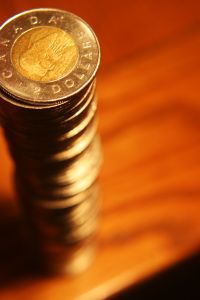

Kevin Drum from Mother Jones is a very good writer who covers a broad range of topics. Several weeks ago he wrote about patents, noting that "More Patents Does Not Equal More Innovation". Well, more patents mean more business for the USPTO and patent lawyers, but they would rather just paint their profit as "innovation". Here is what Mr. Drum writes, citing the corporate media:
Via James Pethokoukis, here's a chart from a new CBO report on federal policies and innovation. Needless to say, you can't read too much into it. It shows the growth since 1963 of total factor productivity (roughly speaking, the share of productivity growth due to technology improvements), and there are lots of possible reasons that TFP hasn't changed much over the past five decades. At a minimum, though, the fact that patent activity has skyrocketed since 1983 with no associated growth in TFP suggests, as the CBO report says dryly, "that the large increase in patenting activity since 1983 may have made little contribution to innovation."
"This whole system has become a sham and people should do something about it, as the problem won’t go away on its own."Might we ever see USPTO staff demonstrating in the streets of Washington, following the example set by EPO staff? The problem and the grievances (about scope and corruption) are similar.
The other week we saw the EFF highlighting yet another “Stupid Patent of the Month”. It is a software patent which is basically something that a child can come up with, or even an observer of what has been going on for centuries. To put it in the words of Ars Technica:
November’s “Stupid Patent of the Month,” brought to you by Penn State
Three months ago, the Electronic Frontier Foundation inaugurated a monthly tradition in which they wrote about a "Stupid Patent of the Month." The first patent they publicized was basically a description of a doctor's "computer-secretary." Since then, they've highlighted a vague software patent owned by a serial litigant, a patent on filming a yoga class, and a patent with a formula for curing cancer (a combination of "sesame seeds, green beans, coffee, meat, evening primrose seeds," among other things.)
One of the items for sale is US Patent No. 8,442,839, entitled "Agent-based collaborative recognition-primed decision-making." The lead inventors are PSU professors John Yen and Michael McNeese. The patent essentially describes different ways that people work together to solve a problem.
Steps include "receiving information regarding a current situation to be analyzed," interacting to receive “assistance in the form of assumptions or expectancies about the situation," and using "collected information to determine whether a decision about the situation is evolving in an anticipated direction." A PSU news site describes the invention as using a framework called "Collaborative Agents for Simulating Teamwork."
"The patent reads a little like what might result if you ate a dictionary filled with buzzwords and drank a bottle of tequila," writes EFF lawyer Daniel Nazer. He notes the patent was originally rejected by the patent office. "Penn State responded by amending its claim to 'include a team-oriented computer architecture that transforms subject matter.' In other words, it took an abstract patent and said, 'Do it on a computer.'"
A new patent published by the USPTO yesterday details an invention by Nintendo that would allow it to emulate its mobile game consoles, including the Game Boy line of devices specifically, in other settings, including on seat-back displays in airplanes and trains, and on mobile devices including cell phones. The patent is an updated take on an older piece of IP, so it’s not an entirely new idea, but it’s still very interesting to consider that Nintendo could have renewed interest in the idea of running its own back catalogue on many different kinds of screens.